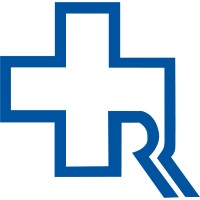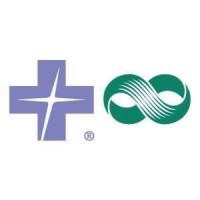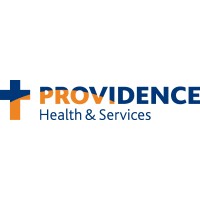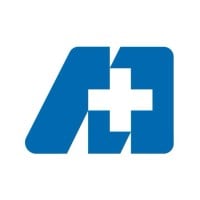
Rutland Regional Medical Center Company Cyber Security Posture
rrmccareers.orgOur Vision: To be the Best Community Healthcare System in New England. About Rutland Regional Medical Center: The biggest community hospital in Vermont and the second largest hospital in the state, Rutland Regional Medical Center has been providing high quality healthcare to the Rutland Region for more than 125 years. As the needs of our community have grown and changed, so has Rutland Regional, adding services, staff and facilities. Providing preventive, diagnostic, acute and rehabilitative services, Rutland Regional Medical Center serves Rutland County, portions of southern and central Vermont and communities in eastern New York State. Rutland Regional is a Magnet(r) hospital supported by excellent nurses, high quality diagnostic and ancillary services and a broad array of sophisticated equipment technology, including advanced diagnostic imaging, a top-of-the-line linear accelerator used in the treatment of cancer patients, and a diagnostic Cardiovascular and Angiographic Lab. At Rutland Regional we manage and adapt to change and growth while continuing our focus on a high standard of personalized, quality medical care, adding key specialties to serve community needs, and focusing on attracting and recruiting highly trained doctors, nurses and staff. We are committed to providing the services, both in and out of the hospital, required to maintain the health of not just our patients, but the entire community
RRMC Company Details
rutland-regional-medical-center
953 employees
3350.0
62
Hospitals and Health Care
rrmccareers.org
Scan still pending
RUT_2508813
In-progress
Between 800 and 900
This score is AI-generated and less favored by cyber insurers, who prefer the TPRM score.
 RRMC Global Score
RRMC Global Score.png)

Rutland Regional Medical Center Company Scoring based on AI Models
| Model Name | Date | Description | Current Score Difference | Score |
|---|---|---|---|---|
| AVERAGE-Industry | 03-12-2025 | This score represents the average cybersecurity rating of companies already scanned within the same industry. It provides a benchmark to compare an individual company's security posture against its industry peers. | N/A | Between 800 and 900 |
Rutland Regional Medical Center Company Cyber Security News & History
| Entity | Type | Severity | Impact | Seen | Url ID | Details | View |
|---|---|---|---|---|---|---|---|
| Rutland Regional Medical Center | Breach | 85 | 3 | 02/2019 | RUT1914822 | Link | |
Rankiteo Explanation : Attack with significant impact with internal employee data leaksDescription: Rutland Regional Medical Center (“Rutland Regional”) suffered a data security incident after employee email accounts were hacked. The breach exposed name, contact information, Social Security number, financial information, date of birth, medical record number, patient identification number, medical and/or clinical information including diagnosis and treatment information, and health insurance information of certain individuals. Rutland Regional investigated the incident and notified the impacted individuals. | |||||||
| Rutland Regional Medical Center | Data Leak | 85 | 3 | 12/2018 | RUT42316223 | Link | |
Rankiteo Explanation : Attack with significant impact with internal employee data leaksDescription: Rutland Regional Medical Center discovered an incident that affect the security of the personal information of certain individuals after employee email accounts were hacked. An employee’s email account was subject to unauthorized access and immediately changed the employee’s password and locked the account. Rutland Regional enlisted the assistance of a third-party forensic expert to further investigate this incident. The attack exposed the name, contact information, Social Security number, financial information, date of birth, medical record number, patient identification number, medical and/or clinical information including diagnosis and treatment information, and health insurance information of certain individuals. Rutland Regional investigated the incident and notified the impacted individuals. | |||||||
Rutland Regional Medical Center Company Subsidiaries

Our Vision: To be the Best Community Healthcare System in New England. About Rutland Regional Medical Center: The biggest community hospital in Vermont and the second largest hospital in the state, Rutland Regional Medical Center has been providing high quality healthcare to the Rutland Region for more than 125 years. As the needs of our community have grown and changed, so has Rutland Regional, adding services, staff and facilities. Providing preventive, diagnostic, acute and rehabilitative services, Rutland Regional Medical Center serves Rutland County, portions of southern and central Vermont and communities in eastern New York State. Rutland Regional is a Magnet(r) hospital supported by excellent nurses, high quality diagnostic and ancillary services and a broad array of sophisticated equipment technology, including advanced diagnostic imaging, a top-of-the-line linear accelerator used in the treatment of cancer patients, and a diagnostic Cardiovascular and Angiographic Lab. At Rutland Regional we manage and adapt to change and growth while continuing our focus on a high standard of personalized, quality medical care, adding key specialties to serve community needs, and focusing on attracting and recruiting highly trained doctors, nurses and staff. We are committed to providing the services, both in and out of the hospital, required to maintain the health of not just our patients, but the entire community
Access Data Using Our API

Get company history
.png)
RRMC Cyber Security News
UVM Health Network a victim of cyberattack
The University of Vermont Health Network Thursday confirmed that it was the victim of a nationwide cyberattack Wednesday that targeted patient records.
National Guard cybersecurity team deployed after UVM Medical Center hack
A cybersecurity unit of the Vermont National Guard will help the University of Vermont Medical Center get its systems up and running after the ...

RRMC Similar Companies

Advocate Aurora Health
Advocate Aurora Health and Atrium Health are now Advocate Health – the fifth-largest nonprofit integrated health system in the U.S. Advocate Health is the fifth-largest nonprofit integrated health system in the United States –created from the combination of Advocate Aurora Health and Atrium Health

Sunrise Senior Living
Beginning with a single community in 1981, Sunrise Senior Living has grown to more than 270 communities throughout the U.S. and Canada. Each of our communities continues the mission laid out by founders Paul and Terry Klaassen more than 40 years ago: to champion quality of life for all seniors. Jo

Providence Health & Services
At Providence, our strength begins with understanding. We take time to see, hear and value everyone who walks through our doors—patient or caregiver, family support person or volunteer. Working with us means that regardless of your role, we’ll walk alongside you in your career, supporting you so you

IQVIA
IQVIA (NYSE:IQV) is a leading global provider of clinical research services, commercial insights and healthcare intelligence to the life sciences and healthcare industries. IQVIA’s portfolio of solutions are powered by IQVIA Connected Intelligence™ to deliver actionable insights and services built o

MultiCare Health System
MultiCare’s roots in the Pacific Northwest go back to 1882, with the founding of Tacoma’s first hospital. Over the years, we’ve grown from a Tacoma-centric, hospital-based organization into the largest, community-based, locally governed health system in the state of Washington. Today, our comprehe

Fresenius Medical Care North America
Fresenius Medical Care North America (FMCNA) is the premier healthcare company focused on providing the highest quality care to people with renal and other chronic conditions. Through its industry-leading network of dialysis facilities and outpatient cardiac and vascular labs, Fresenius Medical Care

Frequently Asked Questions (FAQ) on Cybersecurity Incidents
RRMC CyberSecurity History Information
Total Incidents: According to Rankiteo, RRMC has faced 2 incidents in the past.
Incident Types: The types of cybersecurity incidents that have occurred include ['Data Leak', 'Breach'].
Total Financial Loss: The total financial loss from these incidents is estimated to be {total_financial_loss}.
Cybersecurity Posture: The company's overall cybersecurity posture is described as Our Vision: To be the Best Community Healthcare System in New England. About Rutland Regional Medical Center: The biggest community hospital in Vermont and the second largest hospital in the state, Rutland Regional Medical Center has been providing high quality healthcare to the Rutland Region for more than 125 years. As the needs of our community have grown and changed, so has Rutland Regional, adding services, staff and facilities. Providing preventive, diagnostic, acute and rehabilitative services, Rutland Regional Medical Center serves Rutland County, portions of southern and central Vermont and communities in eastern New York State. Rutland Regional is a Magnet(r) hospital supported by excellent nurses, high quality diagnostic and ancillary services and a broad array of sophisticated equipment technology, including advanced diagnostic imaging, a top-of-the-line linear accelerator used in the treatment of cancer patients, and a diagnostic Cardiovascular and Angiographic Lab. At Rutland Regional we manage and adapt to change and growth while continuing our focus on a high standard of personalized, quality medical care, adding key specialties to serve community needs, and focusing on attracting and recruiting highly trained doctors, nurses and staff. We are committed to providing the services, both in and out of the hospital, required to maintain the health of not just our patients, but the entire community.
Detection and Response: The company detects and responds to cybersecurity incidents through {description_of_detection_and_response_process}.
Incident Details
Incident 1: Ransomware Attack
Title: {Incident_Title}
Description: {Brief_description_of_the_incident}
Date Detected: {Detection_Date}
Date Publicly Disclosed: {Disclosure_Date}
Date Resolved: {Resolution_Date}
Type: {Type_of_Attack}
Attack Vector: {Attack_Vector}
Vulnerability Exploited: {Vulnerability}
Threat Actor: {Threat_Actor}
Motivation: {Motivation}
Incident 2: Data Breach
Title: {Incident_Title}
Description: {Brief_description_of_the_incident}
Date Detected: {Detection_Date}
Date Publicly Disclosed: {Disclosure_Date}
Date Resolved: {Resolution_Date}
Type: {Type_of_Attack}
Attack Vector: {Attack_Vector}
Vulnerability Exploited: {Vulnerability}
Threat Actor: {Threat_Actor}
Motivation: {Motivation}
Common Attack Types: As of now, the company has not encountered any reported incidents involving common cyberattacks.
Identification of Attack Vectors: The company identifies the attack vectors used in incidents through {description_of_identification_process}.
Impact of the Incidents
Incident 1: Ransomware Attack
Financial Loss: {Financial_Loss}
Data Compromised: {Data_Compromised}
Systems Affected: {Systems_Affected}
Downtime: {Downtime}
Operational Impact: {Operational_Impact}
Conversion Rate Impact: {Conversion_Rate_Impact}
Revenue Loss: {Revenue_Loss}
Customer Complaints: {Customer_Complaints}
Brand Reputation Impact: {Brand_Reputation_Impact}
Legal Liabilities: {Legal_Liabilities}
Identity Theft Risk: {Identity_Theft_Risk}
Payment Information Risk: {Payment_Information_Risk}
Incident 2: Data Breach
Financial Loss: {Financial_Loss}
Data Compromised: {Data_Compromised}
Systems Affected: {Systems_Affected}
Downtime: {Downtime}
Operational Impact: {Operational_Impact}
Conversion Rate Impact: {Conversion_Rate_Impact}
Revenue Loss: {Revenue_Loss}
Customer Complaints: {Customer_Complaints}
Brand Reputation Impact: {Brand_Reputation_Impact}
Legal Liabilities: {Legal_Liabilities}
Identity Theft Risk: {Identity_Theft_Risk}
Payment Information Risk: {Payment_Information_Risk}
Average Financial Loss: The average financial loss per incident is {average_financial_loss}.
Commonly Compromised Data Types: The types of data most commonly compromised in incidents are {list_of_commonly_compromised_data_types}.
Incident 1: Ransomware Attack
Entity Name: {Entity_Name}
Entity Type: {Entity_Type}
Industry: {Industry}
Location: {Location}
Size: {Size}
Customers Affected: {Customers_Affected}
Incident 2: Data Breach
Entity Name: {Entity_Name}
Entity Type: {Entity_Type}
Industry: {Industry}
Location: {Location}
Size: {Size}
Customers Affected: {Customers_Affected}
Response to the Incidents
Incident 1: Ransomware Attack
Incident Response Plan Activated: {Yes/No}
Third Party Assistance: {Yes/No}
Law Enforcement Notified: {Yes/No}
Containment Measures: {Containment_Measures}
Remediation Measures: {Remediation_Measures}
Recovery Measures: {Recovery_Measures}
Communication Strategy: {Communication_Strategy}
Adaptive Behavioral WAF: {Adaptive_Behavioral_WAF}
On-Demand Scrubbing Services: {On_Demand_Scrubbing_Services}
Network Segmentation: {Network_Segmentation}
Enhanced Monitoring: {Enhanced_Monitoring}
Incident 2: Data Breach
Incident Response Plan Activated: {Yes/No}
Third Party Assistance: {Yes/No}
Law Enforcement Notified: {Yes/No}
Containment Measures: {Containment_Measures}
Remediation Measures: {Remediation_Measures}
Recovery Measures: {Recovery_Measures}
Communication Strategy: {Communication_Strategy}
Adaptive Behavioral WAF: {Adaptive_Behavioral_WAF}
On-Demand Scrubbing Services: {On_Demand_Scrubbing_Services}
Network Segmentation: {Network_Segmentation}
Enhanced Monitoring: {Enhanced_Monitoring}
Incident Response Plan: The company's incident response plan is described as {description_of_incident_response_plan}.
Third-Party Assistance: The company involves third-party assistance in incident response through {description_of_third_party_involvement}.
Data Breach Information
Incident 2: Data Breach
Type of Data Compromised: {Type_of_Data}
Number of Records Exposed: {Number_of_Records}
Sensitivity of Data: {Sensitivity_of_Data}
Data Exfiltration: {Yes/No}
Data Encryption: {Yes/No}
File Types Exposed: {File_Types}
Personally Identifiable Information: {Yes/No}
Prevention of Data Exfiltration: The company takes the following measures to prevent data exfiltration: {description_of_prevention_measures}.
Handling of PII Incidents: The company handles incidents involving personally identifiable information (PII) through {description_of_handling_process}.
Ransomware Information
Incident 1: Ransomware Attack
Ransom Demanded: {Ransom_Amount}
Ransom Paid: {Ransom_Paid}
Ransomware Strain: {Ransomware_Strain}
Data Encryption: {Yes/No}
Data Exfiltration: {Yes/No}
Ransom Payment Policy: The company's policy on paying ransoms in ransomware incidents is described as {description_of_ransom_payment_policy}.
Data Recovery from Ransomware: The company recovers data encrypted by ransomware through {description_of_data_recovery_process}.
Regulatory Compliance
Incident 1: Ransomware Attack
Regulations Violated: {Regulations_Violated}
Fines Imposed: {Fines_Imposed}
Legal Actions: {Legal_Actions}
Regulatory Notifications: {Regulatory_Notifications}
Incident 2: Data Breach
Regulations Violated: {Regulations_Violated}
Fines Imposed: {Fines_Imposed}
Legal Actions: {Legal_Actions}
Regulatory Notifications: {Regulatory_Notifications}
Regulatory Frameworks: The company complies with the following regulatory frameworks regarding cybersecurity: {list_of_regulatory_frameworks}.
Ensuring Regulatory Compliance: The company ensures compliance with regulatory requirements through {description_of_compliance_measures}.
Lessons Learned and Recommendations
Incident 1: Ransomware Attack
Lessons Learned: {Lessons_Learned}
Incident 2: Data Breach
Lessons Learned: {Lessons_Learned}
Incident 1: Ransomware Attack
Recommendations: {Recommendations}
Incident 2: Data Breach
Recommendations: {Recommendations}
Key Lessons Learned: The key lessons learned from past incidents are {list_of_key_lessons_learned}.
Implemented Recommendations: The company has implemented the following recommendations to improve cybersecurity: {list_of_implemented_recommendations}.
References
Additional Resources: Stakeholders can find additional resources on cybersecurity best practices at {list_of_additional_resources}.
Investigation Status
Incident 1: Ransomware Attack
Investigation Status: {Investigation_Status}
Incident 2: Data Breach
Investigation Status: {Investigation_Status}
Communication of Investigation Status: The company communicates the status of incident investigations to stakeholders through {description_of_communication_process}.
Stakeholder and Customer Advisories
Incident 1: Ransomware Attack
Stakeholder Advisories: {Stakeholder_Advisories}
Customer Advisories: {Customer_Advisories}
Incident 2: Data Breach
Stakeholder Advisories: {Stakeholder_Advisories}
Customer Advisories: {Customer_Advisories}
Advisories Provided: The company provides the following advisories to stakeholders and customers following an incident: {description_of_advisories_provided}.
Initial Access Broker
Incident 1: Ransomware Attack
Entry Point: {Entry_Point}
Reconnaissance Period: {Reconnaissance_Period}
Backdoors Established: {Backdoors_Established}
High Value Targets: {High_Value_Targets}
Data Sold on Dark Web: {Yes/No}
Incident 2: Data Breach
Entry Point: {Entry_Point}
Reconnaissance Period: {Reconnaissance_Period}
Backdoors Established: {Backdoors_Established}
High Value Targets: {High_Value_Targets}
Data Sold on Dark Web: {Yes/No}
Monitoring and Mitigation of Initial Access Brokers: The company monitors and mitigates the activities of initial access brokers through {description_of_monitoring_and_mitigation_measures}.
Post-Incident Analysis
Incident 1: Ransomware Attack
Root Causes: {Root_Causes}
Corrective Actions: {Corrective_Actions}
Incident 2: Data Breach
Root Causes: {Root_Causes}
Corrective Actions: {Corrective_Actions}
Post-Incident Analysis Process: The company's process for conducting post-incident analysis is described as {description_of_post_incident_analysis_process}.
Corrective Actions Taken: The company has taken the following corrective actions based on post-incident analysis: {list_of_corrective_actions_taken}.
Additional Questions
General Information
Ransom Payment History: The company has {paid/not_paid} ransoms in the past.
Last Ransom Demanded: The amount of the last ransom demanded was {last_ransom_amount}.
Last Attacking Group: The attacking group in the last incident was {last_attacking_group}.
Incident Details
Most Recent Incident Detected: The most recent incident detected was on {most_recent_incident_detected_date}.
Most Recent Incident Publicly Disclosed: The most recent incident publicly disclosed was on {most_recent_incident_publicly_disclosed_date}.
Most Recent Incident Resolved: The most recent incident resolved was on {most_recent_incident_resolved_date}.
Impact of the Incidents
Highest Financial Loss: The highest financial loss from an incident was {highest_financial_loss}.
Most Significant Data Compromised: The most significant data compromised in an incident was {most_significant_data_compromised}.
Most Significant System Affected: The most significant system affected in an incident was {most_significant_system_affected}.
Response to the Incidents
Third-Party Assistance in Most Recent Incident: The third-party assistance involved in the most recent incident was {third_party_assistance_in_most_recent_incident}.
Containment Measures in Most Recent Incident: The containment measures taken in the most recent incident were {containment_measures_in_most_recent_incident}.
Data Breach Information
Most Sensitive Data Compromised: The most sensitive data compromised in a breach was {most_sensitive_data_compromised}.
Number of Records Exposed: The number of records exposed in the most significant breach was {number_of_records_exposed}.
Ransomware Information
Highest Ransom Demanded: The highest ransom demanded in a ransomware incident was {highest_ransom_demanded}.
Highest Ransom Paid: The highest ransom paid in a ransomware incident was {highest_ransom_paid}.
Regulatory Compliance
Highest Fine Imposed: The highest fine imposed for a regulatory violation was {highest_fine_imposed}.
Most Significant Legal Action: The most significant legal action taken for a regulatory violation was {most_significant_legal_action}.
Lessons Learned and Recommendations
Most Significant Lesson Learned: The most significant lesson learned from past incidents was {most_significant_lesson_learned}.
Most Significant Recommendation Implemented: The most significant recommendation implemented to improve cybersecurity was {most_significant_recommendation_implemented}.
References
Most Recent Source: The most recent source of information about an incident is {most_recent_source}.
Most Recent URL for Additional Resources: The most recent URL for additional resources on cybersecurity best practices is {most_recent_url}.
Investigation Status
Current Status of Most Recent Investigation: The current status of the most recent investigation is {current_status_of_most_recent_investigation}.
Stakeholder and Customer Advisories
Most Recent Stakeholder Advisory: The most recent stakeholder advisory issued was {most_recent_stakeholder_advisory}.
Most Recent Customer Advisory: The most recent customer advisory issued was {most_recent_customer_advisory}.
Initial Access Broker
Most Recent Entry Point: The most recent entry point used by an initial access broker was {most_recent_entry_point}.
Most Recent Reconnaissance Period: The most recent reconnaissance period for an incident was {most_recent_reconnaissance_period}.
Post-Incident Analysis
Most Significant Root Cause: The most significant root cause identified in post-incident analysis was {most_significant_root_cause}.
Most Significant Corrective Action: The most significant corrective action taken based on post-incident analysis was {most_significant_corrective_action}.
What Do We Measure?
















Every week, Rankiteo analyzes billions of signals to give organizations a sharper, faster view of emerging risks. With deeper, more actionable intelligence at their fingertips, security teams can outpace threat actors, respond instantly to Zero-Day attacks, and dramatically shrink their risk exposure window.
These are some of the factors we use to calculate the overall score:
Identify exposed access points, detect misconfigured SSL certificates, and uncover vulnerabilities across the network infrastructure.
Gain visibility into the software components used within an organization to detect vulnerabilities, manage risk, and ensure supply chain security.
Monitor and manage all IT assets and their configurations to ensure accurate, real-time visibility across the company's technology environment.
Leverage real-time insights on active threats, malware campaigns, and emerging vulnerabilities to proactively defend against evolving cyberattacks.




